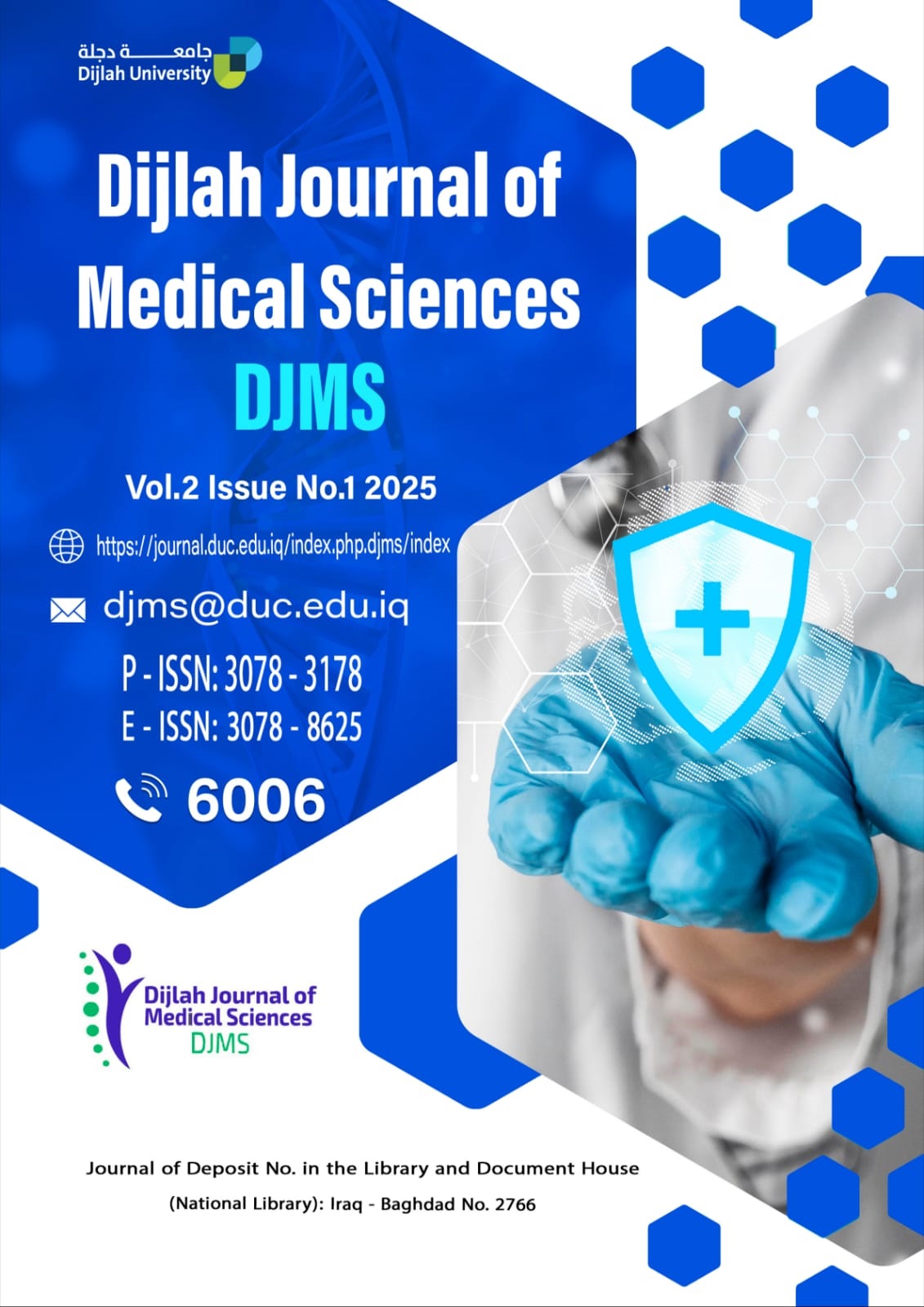Prevalence of Salmonella Bacteria Causing Intestinal Diarrhea in Domestic Dogs and Cats and Identification of Their Genetic Diversity in Diwaniyah Governorate, Iraq
Mohammad Hassan Mazhar
DOI:
https://doi.org/10.65204/DJMS-PSBCIDKeywords:
Salmonella Bacteria, Infectious Diseases, Animal Health, Genetic Diversity of SalmonellaAbstract
The study aimed to investigate the prevalence of Salmonella bacteria in dogs and cats infected with diarrhea for the period (from October 2024 to March 2025), where 40 samples were collected and divided into two groups (20 dog samples) and (20 cat samples). Salmonella bacteria were isolated and diagnosed using phenotypic, biochemical and molecular methods. The number of confirmed positive isolates was 10 isolates, representing 40%, distributed as follows: 7 dogs and 3 cats. The incidence of several virulence genes invA and SiTc was also evaluated for all culture-positive Salmonella isolates. The SiTc gene was 30% prevalent (3: 2 dogs and 1 cat), but the invA gene was 100% prevalent, making it an effective PCR diagnostic tool for Salmonella. The genetic diversity of the bacteria under study was also identified using RAPD technology. PCR results showed that there was genetic variation among the ten diagnosed isolates, and they were distributed in three clusters (I,V,IV) with a total of 4 variations. In conclusion, it must be noted that dogs, especially domestic ones, act as a reservoir for invasive Salmonella bacteria, so society needs strict health measures to prevent its spread to humans.

